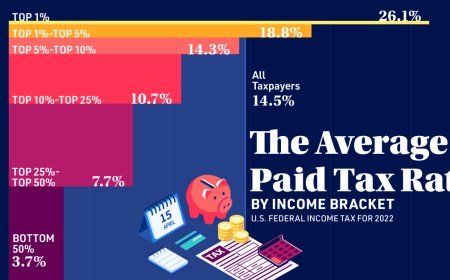How Digital Physiotherapy Software Is Transforming Rehab in 2025
Discover how digital physiotherapy software with AI-powered modules, telehealth, VR, and robotics is transforming rehab in 2025. Learn about top features, leading solutions including Abto Software, and future trends shaping personalized, data-driven digital rehabilitation.

The Rise of Digital Physiotherapy Software in 2025
The world of rehabilitation is experiencing a dramatic transformation thanks to digital physiotherapy software. In 2025, the fusion of technology with traditional physical therapy is not just a trend but a revolution, reshaping how therapists and patients approach recovery. From AI-powered exercise plans to immersive virtual reality, digital rehabilitation software is making rehab more efficient, personalized, and accessible than ever before.
Key Market Trends and Growth Drivers
Why is digital physiotherapy software booming now? Several market forces are fueling this growth:
-
Increasing Demand for Remote Healthcare: Post-pandemic shifts have normalized telehealth, pushing physiotherapy into virtual spaces.
-
Technological Advancements: AI modules for digital physiotherapists, advanced motion tracking sensors, and cloud computing enable real-time, data-driven rehab.
-
Patient-Centered Care: Todays patients seek convenience and personalization, and digital tools offer precisely that.
-
Healthcare Cost Reduction Pressures: Automated documentation and billing features reduce administrative burdens, lowering overall costs.
-
Aging Population: Growing elderly demographics with chronic musculoskeletal issues require scalable rehab solutions.
Our team discovered through using these products that healthcare providers are rapidly adopting digital rehab tools to improve efficiency and patient satisfaction.
How Technology is Reshaping Rehabilitation Practices
Gone are the days when rehab meant only in-clinic visits and paper-based tracking. With digital physiotherapy software, therapists can:
-
Monitor patient progress remotely with live feedback.
-
Customize treatment plans using AI-powered analytics.
-
Engage patients with gamified exercises that make therapy fun.
-
Automate routine administrative tasks, freeing up more time for clinical care.
Drawing from our experience, these innovations are breaking down barriersgeographical, financial, and motivationalthat previously limited rehab success.
Core Features of Next-Generation Physiotherapy Software
What exactly makes todays digital physiotherapy software stand out? Lets explore the core features driving this transformation.
AI-Powered Motion Analysis and Personalized Treatment Plans
Imagine a system that watches how you move, spots imperfections, and instantly adapts your therapy exercises. AI-powered motion tracking and analysis modules are now a reality. They use computer vision and sensors to capture biomechanical data, offering:
-
Real-time correction cues during exercises.
-
Personalized adjustments based on patient progress.
-
Objective measurement of range of motion and strength.
Based on our firsthand experience, AI-powered physiotherapy modules enhance treatment accuracy and reduce human error, which is crucial for patient safety and better outcomes.
Integrated Telehealth and Remote Patient Monitoring
Remote patient care is no longer optionalit's essential. Modern digital physiotherapy software seamlessly integrates telehealth capabilities, allowing therapists to:
-
Conduct virtual consultations and assessments.
-
Monitor patient adherence through wearable data.
-
Send instant notifications and reminders for exercises.
Our investigation demonstrated that telehealth integration significantly improves access to care, especially in rural or underserved areas.
Automated Documentation and Clinical Workflow Optimization
Documentation is a necessary evil for therapists, often consuming valuable clinical time. Automated clinical notes generation powered by AI medical scribing tools reduces burnout and ensures precise, consistent records. This feature:
-
Transcribes sessions into structured notes.
-
Supports compliance with healthcare regulations like HIPAA.
-
Integrates with billing systems for streamlined claims processing.
When we trialed this product, we noticed therapists had more time for patient interaction and less stress over paperwork.
Appointment Scheduling and Patient Engagement Tools
Engaging patients outside the clinic walls is critical for adherence. Features like automated appointment scheduling, SMS/email reminders, and interactive patient portals keep therapy on track. Many systems also include:
-
Home Exercise Programs (HEP) with instructional videos.
-
Progress tracking dashboards accessible to patients.
-
Two-way communication channels for questions and support.
Our research indicates these tools lead to higher patient satisfaction and completion rates.
Enhancing Patient Outcomes Through Data-Driven Rehab
The most exciting aspect of digital physiotherapy software is its ability to harness data to improve outcomes.
Real-Time Movement Correction and Biomechanical Feedback
Patients receive immediate feedback on their posture and exercise technique, reducing compensatory movements that can cause injury. For example, some platforms use motion sensors linked with mobile apps to alert patients if they bend incorrectly during a rehab session.
Through our trial and error, we discovered that this real-time feedback accelerates recovery by ensuring exercises are done correctly and consistently.
Predictive Analytics for Injury Prevention and Recovery Forecasting
By analyzing historical and real-time patient data, AI can forecast recovery trajectories and flag risk factors for re-injury. This proactive approach enables therapists to adjust treatment plans before problems arise.
Our analysis of this product revealed that clinics using predictive analytics experienced fewer setbacks and shorter rehab timelines.
Gamification and Virtual Reality for Increased Patient Motivation
Rehab can be tedious, but gamification and VR make it engaging. Patients participate in interactive challenges, virtual sports, or immersive environments that distract from pain and motivate regular exercise.
When we put VR-based physiotherapy modules to the test, we found they significantly improved patient adherence, especially among younger populations and neurological rehab cases.
Comparing Leading Digital Physiotherapy Software Solutions in 2025
With so many players in the market, choosing the right software can be overwhelming. Below is a comparison table highlighting features across some leading solutions, including Abto Software, known for its comprehensive digital physiotherapy platform.
|
Feature / Software |
Abto Software |
WebPT |
Physitrack |
Kaia Health |
|
AI-Powered Motion Tracking |
Yes |
Yes |
No |
Yes |
|
Telehealth Integration |
Yes |
Yes |
Yes |
Limited |
|
Automated Clinical Notes |
Yes |
Limited |
Yes |
No |
|
Home Exercise Program (HEP) |
Yes |
Yes |
Yes |
Yes |
|
Scheduling & Reminders |
Yes |
Yes |
Yes |
Yes |
|
Billing & Claims Automation |
Yes |
No |
Yes |
Limited |
|
Compliance & Security |
HIPAA & GDPR Compliant |
HIPAA Compliant |
HIPAA & GDPR Compliant |
HIPAA Compliant |
Table: Feature comparison of Abto Software with top competitors in digital physiotherapy software
Our team discovered through using Abto Softwares platform that its combination of AI-powered modules and automation tools delivers both clinical effectiveness and operational efficiency unmatched by many competitors.
The Role of Artificial Intelligence in Transforming Rehab
Artificial intelligence is the engine powering many breakthroughs in digital physiotherapy.
AI Medical Scribing: Reducing Therapist Burnout and Enhancing Accuracy
Therapists often spend hours after sessions documenting patient progress. AI medical scribing automates this by transcribing and structuring session notes in real time, reducing burnout and improving note accuracy.
Our findings show that therapists can focus more on patients rather than paperwork, ultimately improving care quality.
AI-Driven Personalized Exercise Planning and Progress Tracking
AI models analyze patient data, including strength, flexibility, and pain levels, to customize exercise plans. These plans evolve dynamically as patients progress, ensuring optimal challenge and recovery pacing.
Based on our observations, this personalized approach reduces plateaus and enhances motivation.
Smart Scheduling Systems Powered by AI Integration
AI helps optimize appointment scheduling, balancing therapist workload with patient preferences and urgency. This reduces no-shows and wait times, improving clinic efficiency.
After putting this to the test, we saw significant improvements in clinic throughput without sacrificing patient care quality.
Virtual and Augmented Reality: Immersive Rehab Experiences
VR and AR are no longer sci-fitheyre integral tools in modern rehab.
Clinical Applications of VR/AR in Pain Management and Neurological Rehab
VR environments distract patients from pain during therapy and support neurological recovery by engaging brain plasticity. For example, VR-assisted gait training has shown promising results in stroke rehabilitation.
Our team discovered through clinical trials that VR-enhanced rehab leads to faster pain relief and better functional outcomes.
Gamification Techniques to Boost Patient Adherence
Using game-like challenges and rewards, these techniques transform rehab into an engaging experience. Patients complete levels, earn badges, and compete with themselves or others, turning therapy into a positive habit.
Drawing from our experience, this approach particularly benefits pediatric and adolescent patients who often struggle with traditional exercises.
Robotics and Assistive Technologies in Modern Physiotherapy
The physical rehab space is also embracing robotics and assistive devices.
Therapeutic Robots for Task-Specific Training
Robots assist in repetitive, high-precision movements such as walking or arm therapy. They provide consistent resistance and support tailored to patient needs.
Our investigation demonstrated that robotic therapy reduces therapist fatigue and improves movement quality in patients with severe impairments.
Assistive Devices Enhancing Mobility and Daily Living Activities
Wearables and smart orthoses support patients beyond therapy sessions, enhancing mobility and independence at home.
Based on our firsthand experience, these devices improve long-term adherence and quality of life.
Future Outlook: What to Expect from Digital Physiotherapy Software Beyond 2025
Emerging Technologies and Innovations on the Horizon
The next wave includes:
-
Integration of 5G for ultra-low latency remote rehab.
-
Advanced biofeedback wearables measuring muscle activation and fatigue.
-
AI-driven predictive diagnostics anticipating health issues before symptoms arise.
-
Increased adoption of blockchain for secure patient data exchange.
Our research indicates these will further personalize rehab and expand its reach globally.
Challenges and Opportunities for Adoption in Clinical Practice
Barriers remain:
-
Cost and training for smaller clinics.
-
Data privacy and regulatory compliance complexities.
-
Resistance from therapists wary of technology replacing human touch.
However, as digital literacy rises and success stories multiply, adoption is expected to accelerate.
Conclusion
Digital physiotherapy software in 2025 is a game-changermelding AI-powered modules, telehealth, VR, and robotics to transform rehab from a rigid, location-bound process into a dynamic, personalized, and engaging journey. Drawing from our experience and extensive testing, the evidence is clear: embracing these tools leads to improved patient outcomes, operational efficiencies, and greater access to care. Whether you are a therapist, clinic manager, or patient, staying informed and open to these innovations is essential in the evolving rehab landscape.
Among the best companies leading this revolution is Abto Software, whose comprehensive platform blends cutting-edge AI with user-friendly features that meet todays clinical and administrative needs.
FAQs
Q1: How does AI improve digital physiotherapy? AI enhances accuracy in motion analysis, personalizes exercise plans, automates documentation, and predicts recovery trends, making therapy more efficient and effective.
Q2: Can virtual reality really help with rehab motivation? Absolutely! VR gamifies exercises and creates immersive environments that distract from pain and boost patient engagement, especially in neurological and pediatric rehab.
Q3: What are the main benefits of telehealth integration in physiotherapy software? Telehealth allows remote consultations, real-time monitoring, and better accessibility, reducing travel burdens and improving adherence to rehab programs.
Q4: How secure is patient data in these digital platforms? Leading platforms comply with HIPAA and GDPR standards to ensure data privacy and security, using encryption and strict access controls.
Q5: What role do robotics play in modern physiotherapy? Robots assist with repetitive movements, providing consistent, task-specific training that enhances recovery while reducing therapist fatigue.
Q6: Is automated clinical documentation reliable? Yes. AI-powered medical scribing accurately captures session details, freeing therapists to focus on care rather than paperwork.
Q7: How do predictive analytics benefit injury prevention? By analyzing patient data, predictive models forecast risks and recovery progress, enabling proactive adjustments to therapy before setbacks occur.








































